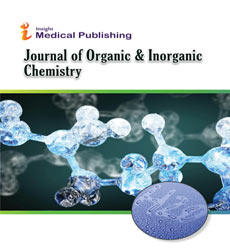Zinc in Medicine: Inspect It's Role in Anticancer and Therapeutic Applications
Ammon Djoser
Department of Applied Physical Chemistry Laboratory, New Valley University, Alkharga, Egypt
Published Date: 2024-12-11DOI10.36648/2472-1123.10.4.101
Ammon Djoser*
1Department of Applied Physical Chemistry Laboratory, New Valley University, Alkharga, Egypt
- *Corresponding Author:
- Ammon Djoser,
Department of Applied Physical Chemistry Laboratory, New Valley University, Alkharga, Egypt
E-mail: djoserammon@al.et
Received date: November 27, 2024, Manuscript No. IPJOIC-24-20051; Editor assigned date: November 30, 2024, PreQC No. IPJOIC-24-20051 (PQ); Reviewed date: December 13, 2024, QC No. IPJOIC-24-20051; Revised date: December 20, 2024, Manuscript No. IPJOIC-24-20051 (R); Published date: December 27, 2024, DOI: 10.36648/2472-1123.10.4.101
Citation: Djoser A (2024) Zinc in Medicine: Inspect It's Role in Anticancer and Therapeutic Applications. J Org Inorg Chem Vol. 10 No.4: 101.
Description
Zinc is a critical micro-element, playing a vital role in numerous physiological processes. As the second most abundant trace element in the human body, it is essential for the functioning of enzymes, transcription factors and proteins involved in DNA repair, synthesis and translation. Zinc's significance is largely attributed to its chemical properties, such as its redox inactivity in the form of Zn²⁺, its d10 electron configuration and its ability to adopt diverse coordination geometries. Moreover, zinc's low toxicity compared to other metal-based drugs, along with its coordination versatility, makes it a valuable component in medicinal chemistry. It interacts with various donor atoms, especially nitrogen and sulfur, forming biologically active zinc(II) coordination complexes with properties beneficial for therapeutic applications, including anticancer, antimicrobial and antioxidant effects.
Zinc-based complexes in therapeutics
Zinc-based coordination compounds have emerged as promising candidates in the development of low-toxicity anticancer therapeutics. Unlike platinum-based complexes, which are commonly used in chemotherapy, zinc(II) complexes exhibit anticancer activity due to their rapid ligand exchange rates, ability to stimulate Lewis acid activation and participation in DNA cleavage and hydrolysis. These properties make zinc complexes potential substitutes for platinum drugs, with the advantage of lower toxicity. However, the synthesis of novel zinc(II) coordination complexes using biologically active ligands remains challenging, as high yield production is often difficult. The iso-malononitriledithiolate (i-mnt²⁻) ligand is a versatile and flexible chelating agent with remarkable electronic and structural properties. It can coordinate with metal ions in multiple modes, facilitating the formation of stable complexes. The sulfur atoms in the i-mnt²⁻ act as soft donor atoms, while the cyano groups provide additional electronic properties through their π-acceptor ability. These characteristics make the i-mnt²⁻ ligand highly effective for the design of metal complexes, particularly in medicinal chemistry and materials science. Furthermore, the i-mnt²⁻ ligand can facilitate the development of metallosupramolecular architectures through weak noncovalent interactions, such as hydrogen bonding and π-π stacking, enhancing the stability and functionality of these structures.
Supramolecular architectures and non-covalent interactions
In the context of metallosupramolecular chemistry, weak noncovalent interactions, such as coordinate bonds and hydrogen bonding, play a pivotal role in the design and stabilization of complex molecular architectures. These interactions allow for the creation of diverse structures, ranging from simple selfassembled materials to more sophisticated systems like molecular machines and host-guest complexes. Understanding the structure-activity relationships of these materials is vital for tuning their properties, stability and functions, particularly in the design of therapeutic agents. Building upon the properties of the i-mnt²⁻ ligand and the role of zinc in therapeutic applications, the current study focuses on the synthesis of a novel Zn(II) complex using dithiolate-amine binary ligands. The complex's structure has been characterized through crystal structure analysis, Hirshfeld surface analysis and Density Functional Theory (DFT) optimization. Additionally, the anticancer activity of the complex has been evaluated, specifically its cytotoxicity against the Dalton's Lymphoma (DL) cell line. DNA binding studies and molecular docking analyses were also conducted to explore the potential mechanisms underlying the complex's anticancer activity. The findings from this research could provide valuable insights into the development of zinc-based anticancer agents with improved stability and efficacy, leveraging the unique properties of the i-mnt²⁻ ligand and the role of non-covalent interactions in metallosupramolecular design.
Open Access Journals
- Aquaculture & Veterinary Science
- Chemistry & Chemical Sciences
- Clinical Sciences
- Engineering
- General Science
- Genetics & Molecular Biology
- Health Care & Nursing
- Immunology & Microbiology
- Materials Science
- Mathematics & Physics
- Medical Sciences
- Neurology & Psychiatry
- Oncology & Cancer Science
- Pharmaceutical Sciences
